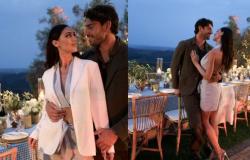What is the happiness? How do you find it? And why are we looking for it so much? These are questions that each of us will have come to ask ourselves at some point in life. Finding the answer is neither simple nor immediate.
Sometimes, however, it happens that we are able to reflect on such complicated topics thanks to the languages of art and literature, which come to our aid by giving words to concepts that would be inexpressible for us.
Thus, we come across a book that, telling the story of two lives and two important friendships, the wonderful “Two lives” by Emanuele Trevi, offers us a look at the theme of happiness by making us discover a splendid poem by Cristina Campo, “How much to be happy”, which today we want to share with you.
“How to be happy” by Cristina Campo
“As for being happy, that is
the terribly difficult, exhausting.How to bring in the balance
on his head a precious pagoda,
all made of blown glass, adorned with bells
and of fragile flames lit;
and continue to complete the thousand hour by hour
dark and heavy movements of the day
without a light going out, that
a bell gives a troubled note.”
Cultivate happiness
“As for being happy, that is
the terribly difficult, exhausting.”
This short poem by Cristina Campo leads us to reflect on our way of conceiving happiness and, consequently, unhappiness. With her verses, the poet describes in detail what it means to be happy: it is not simple, nor obvious, nor, perhaps, natural. It is certainly more comfortable to face life by looking at bad things as misfortunes, at beautiful things as quick and fleeting, fleeting moments of pause between one pain and another.
Being happy involves a high degree of awareness of ourselves and the world, but also of the responsibilities, merits and faults that characterize us. Happiness, Cristina Campo teaches us with her verses, is not sought, but rather cultivated. She takes care of herself every day, step by step, taking care not to break her along our journey:
“As for being happy” is made up of precise, decisive words, behind which lies Cristina Campo’s spasmodic desire to find a way to express and tell the real, not only the tangible one, but also the immaterial real, the set of states of mind and feelings that we carry with us, laboriously, like a baggage destined to fill up as time passes.
The method chosen by the author to explain the nature of happiness is the simile:
“How to bring in the balance
on his head a precious pagoda,
all made of blown glass, adorned with bells
and of fragile burning flames”.
The analogy with the “precious pagoda”, as rich in precious ornaments as it is fragile, effectively shows the idea that nourished this composition by Cristina Campo. Being happy is not a spontaneous act. Happiness is not found by chance, nor can it reach us without our collaboration.
Being happy means taking care, paying attention, moving like a tightrope walker, being meticulous and delicate, aware. This is why unhappiness and dissatisfaction are much easier to experience: they do not require any care, or awareness of oneself or others. Complaining helps you justify yourself. Being sad helps you feel better in your gray areas, without breaking the mold, without taking responsibility for your choices.
Cristina Campo
Cristina Campo is the stage name of Vittoria Maria Angelica Marcella Cristina Guerrini, writer, poet and translator from Bologna born from the marriage between Guido Guerrini, well-known musician and composer, and Emilia Putti. Suffering from a congenital heart malformation, Vittoria spent a lonely childhood, isolated from her peers and deprived of the opportunity to follow her studies regularly.
The period of Vittoria’s youth is characterized, however, by the cultural richness to which the young woman is exposed thanks to the contacts of her relatives, in particular her father, who is hired to direct the Cherubini Conservatory of Florence and brings the whole family with him to the capital Tuscan.
Here, Vittoria Guerrini lives in a stimulating environment, and crosses paths with Leone Traverso, a Germanist and translator to whom she becomes romantically linked for some time. She also meets Mario Luzi and Gianfranco Draghi, and in the meantime she makes herself known in cultural circles.
Her shyness leads her to the choice to publish the works of which she is the author using stage names such as that of Cristina Campo, giving life to highly original works, which are influenced by the writer’s multifaceted influences and her passion for English literature. She died in Rome on 10 January 1977.
© Reproduction Reserved





